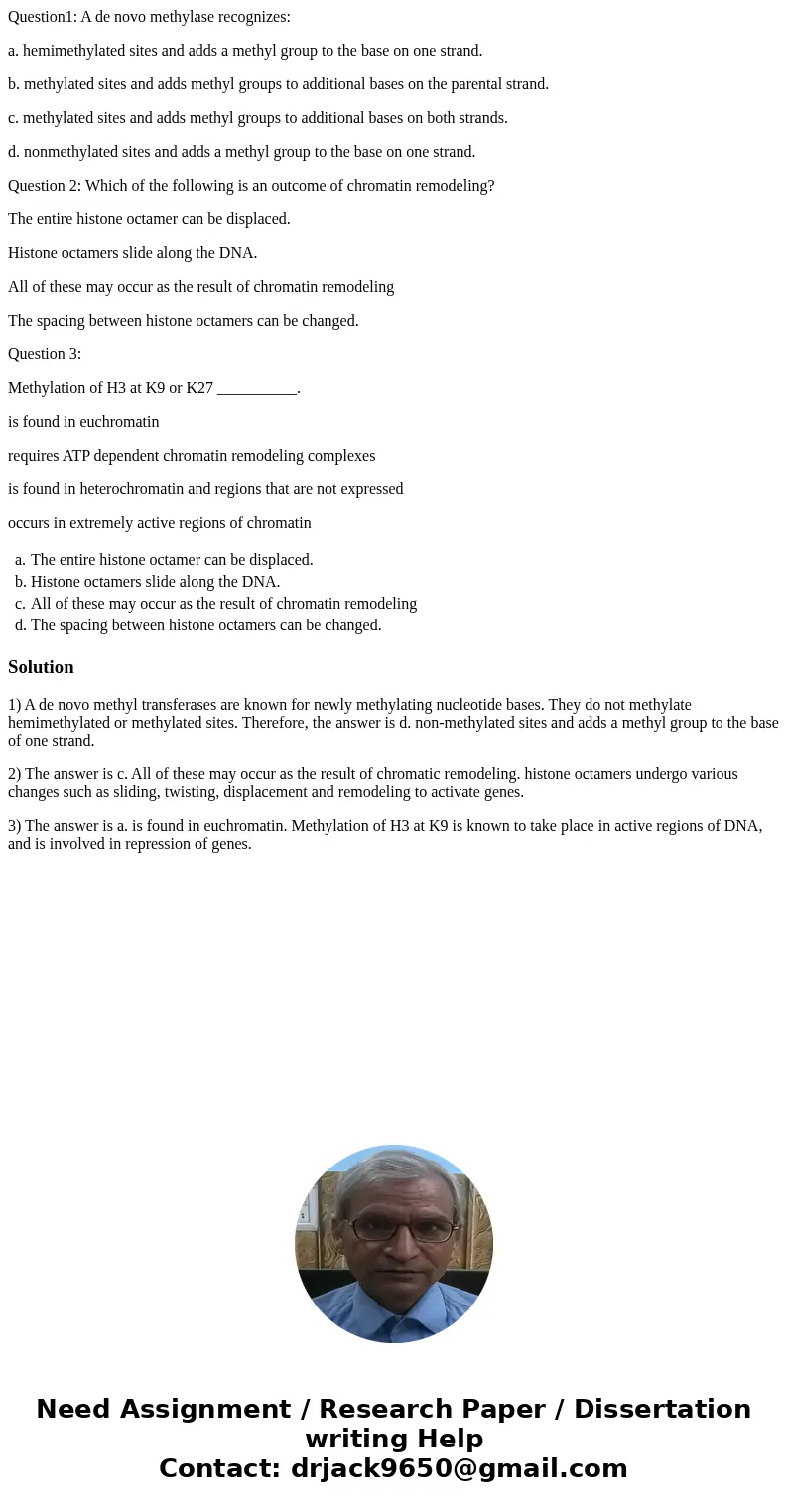Question1 A de novo methylase recognizes a hemimethylated si
Question1: A de novo methylase recognizes:
a. hemimethylated sites and adds a methyl group to the base on one strand.
b. methylated sites and adds methyl groups to additional bases on the parental strand.
c. methylated sites and adds methyl groups to additional bases on both strands.
d. nonmethylated sites and adds a methyl group to the base on one strand.
Question 2: Which of the following is an outcome of chromatin remodeling?
The entire histone octamer can be displaced.
Histone octamers slide along the DNA.
All of these may occur as the result of chromatin remodeling
The spacing between histone octamers can be changed.
Question 3:
Methylation of H3 at K9 or K27 __________.
is found in euchromatin
requires ATP dependent chromatin remodeling complexes
is found in heterochromatin and regions that are not expressed
occurs in extremely active regions of chromatin
| a. | The entire histone octamer can be displaced. | |
| b. | Histone octamers slide along the DNA. | |
| c. | All of these may occur as the result of chromatin remodeling | |
| d. | The spacing between histone octamers can be changed. |
Solution
1) A de novo methyl transferases are known for newly methylating nucleotide bases. They do not methylate hemimethylated or methylated sites. Therefore, the answer is d. non-methylated sites and adds a methyl group to the base of one strand.
2) The answer is c. All of these may occur as the result of chromatic remodeling. histone octamers undergo various changes such as sliding, twisting, displacement and remodeling to activate genes.
3) The answer is a. is found in euchromatin. Methylation of H3 at K9 is known to take place in active regions of DNA, and is involved in repression of genes.

 Homework Sourse
Homework Sourse